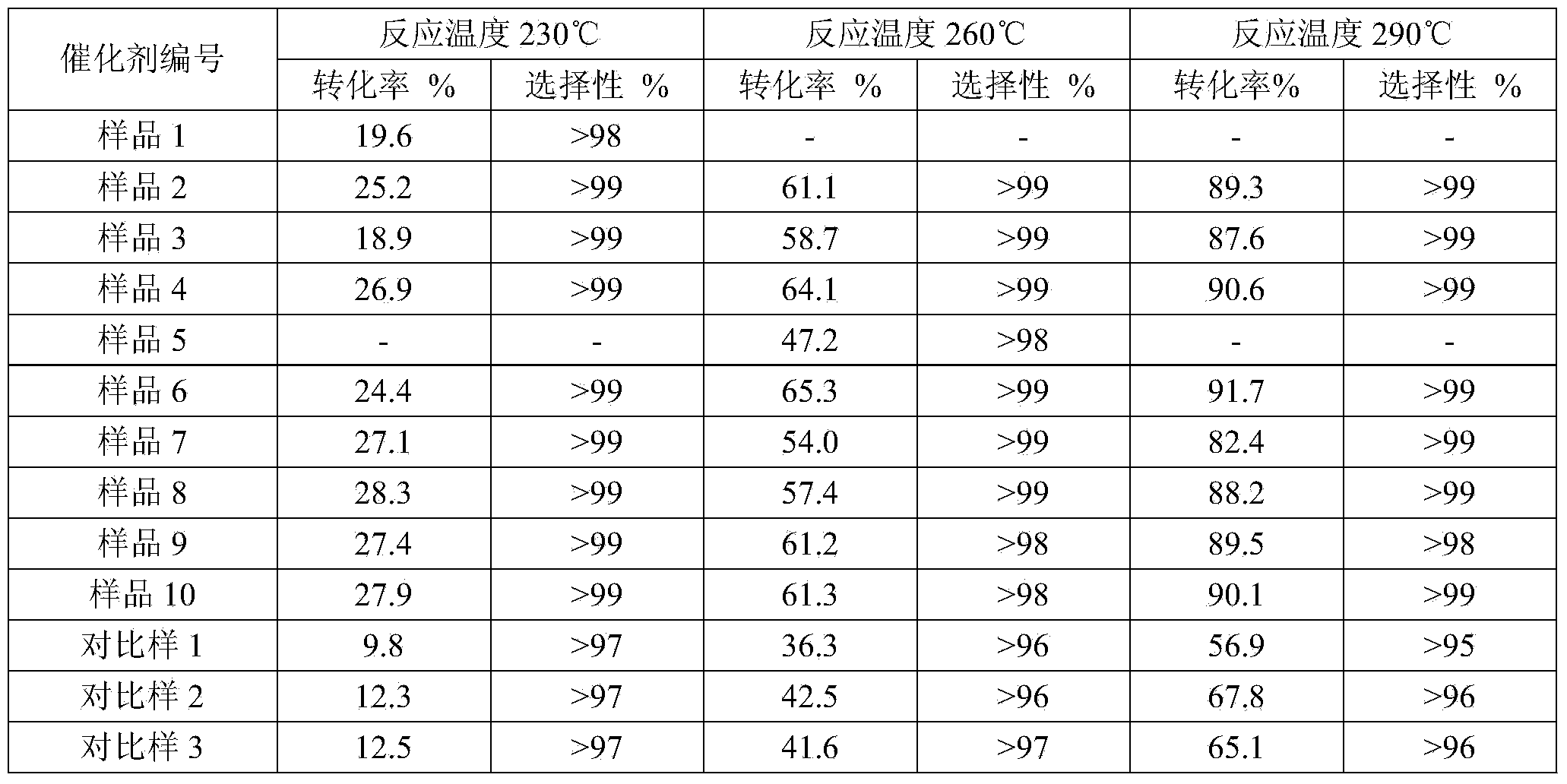Catalyst applied to preparation of vinyl chloride by catalytic cracking of 1,2-dichloroethane as well as preparation method and application of catalyst
A technology of catalytic cracking and dichloroethane, applied in the field of cracking catalysts, can solve the problems of high reaction temperature, easy coking, high energy consumption, etc., and achieve the effects of simple preparation process, lower cracking temperature and short process
- Summary
- Abstract
- Description
- Claims
- Application Information
AI Technical Summary
Problems solved by technology
Method used
Image
Examples
preparation example Construction
[0054] The present invention also provides the preparation method of above-mentioned nitrogen-doped activated carbon catalyst correspondingly, generally comprises the following steps:
[0055] Step (1): Soak the activated carbon to remove impurities and dredge the pores, and then filter, wash, and dry it for later use;
[0056] Preferably, the soaking solution is selected from aqueous solutions of sulfuric acid, nitric acid, phosphoric acid, hydrochloric acid and sodium hydroxide, with a concentration of 0.5-5 mol / L, preferably 1-2.5 mol / L; According to the volume ratio of 1:1.1~1.5; soaking treatment for 1-24 hours. The purpose of this step is to remove impurities in the activated carbon raw material by soaking. Therefore, within the scope that those skilled in the art can understand, any soaking scheme that can achieve the purpose of removing impurities belongs to the scope of protection of the present invention; it is preferable to use centrifugal drying for solid-liquid s...
Embodiment 1
[0072] Preparation of sample 1: Nitrogen-doped coal-based carbon catalyst using ammonia as nitrogen source
[0073] The specific preparation process is as follows: 500g of coal-based carbon is added to 1000ml of 2mol / L hydrochloric acid solution, soaked at room temperature for 12 hours, then centrifuged to dry, washed with deionized water to weak acidity, and dried at 120°C for 10 hours. Take 50g of treated activated carbon and put it into a tube furnace. After raising the temperature to 500°C in a nitrogen atmosphere, feed ammonia and hydrogen at a rate of 50ml / min and 10ml / min at the same time, and stop heating and cooling after 6 hours. to room temperature, and shut off the ammonia and hydrogen to obtain a nitrogen-doped activated carbon catalyst with a total nitrogen doping amount of 1.1wt% on the inner and outer surfaces.
Embodiment 2
[0075] Preparation sample 2: nitrogen-doped coal-based carbon catalyst using polyacrylamide as nitrogen source.
[0076] The specific preparation process is as follows: take 2g of polyacrylamide-300 (analytical pure, molecular weight) and add it into 100g of deionized water, heat and stir at 60°C until completely dissolved. 50 g of the coal-based carbon treated with hydrochloric acid in Example 1 was added thereto, soaked in vacuum at -0.1 MPa for 2 hours, filtered to remove excess solution, and dried in vacuum at 80° C. for 10 hours. Put the dried activated carbon into a tube furnace, and carbonize at 600°C for 10 hours under the protection of nitrogen to obtain a nitrogen-doped coal-based carbon catalyst with polyacrylamide as the nitrogen source, and the nitrogen doping amount is between 0.1-10%. between.
PUM
 Login to View More
Login to View More Abstract
Description
Claims
Application Information
 Login to View More
Login to View More - R&D
- Intellectual Property
- Life Sciences
- Materials
- Tech Scout
- Unparalleled Data Quality
- Higher Quality Content
- 60% Fewer Hallucinations
Browse by: Latest US Patents, China's latest patents, Technical Efficacy Thesaurus, Application Domain, Technology Topic, Popular Technical Reports.
© 2025 PatSnap. All rights reserved.Legal|Privacy policy|Modern Slavery Act Transparency Statement|Sitemap|About US| Contact US: help@patsnap.com

